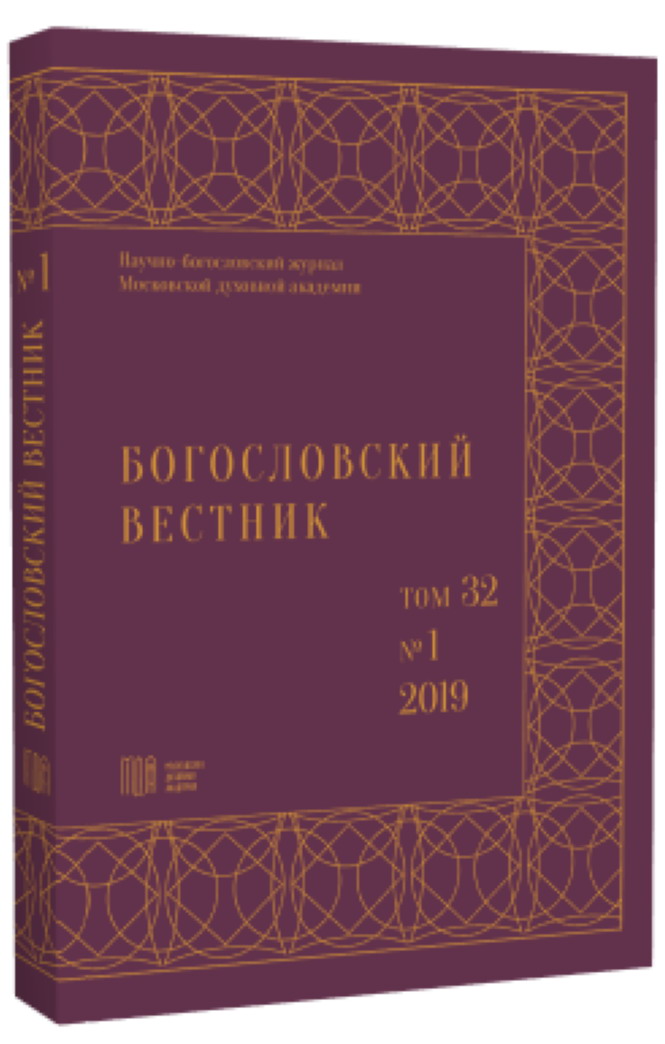Origin of the Pentateuch: Tradition and Documentary Hypothesis
DOI:
https://doi.org/10.31802/2500-1450-2019-32-39-51Keywords:
prophet Moses, Pentateuch, Torah, Documentary hypothesis, source, God names YHWH and ’Elōhîm, Priesterkodex, Deuteronomist, Jahwist, ElohistAbstract
In the article the problem of Pentateuch’s origin is researched. According to the traditional Church position, the Pentateuch was always considered a work of the prophet Moses. But already in XVII century - first half of XVIII century they were scholars (Benedictus Spinoza, Richard Simon, Jean Astruc), who argued, that the entire text of Pentateuch or some of its parts do not belong to Moses. These assumptions received a development in the works of protestant scholars Wilhelm De Wette, E. Reuss, Karl Graf, G. Hupfeld and J. Wellhausen. As a result, J. Wellhausen formulated a hypothesis, that the Pentateuch’s text consists of four sources (documents) - Jahwist (J), Elohist (E), Deuteronomist (D) and Priesterkodex (P). This hypothesiswas called the Documentary hypothesis. It is important to notice, that the earliest of these sources was dated by Wellhausen to the IX century BC. So there is an obvious contradiction between the traditional and critical views on the Torah’s origin. The A. sets forth the main arguments of the followers of the documentary hypothesis, who argue a composite character of the Pentateuch, and tries to understand the attitude towards it in pre-revolotionary Russian biblical studies, in Catholicism and traditional Judaism.
Downloads
References
Источники
Василий Великий, свт. Творения. Часть 1. М., 1845.
Священное Писание в толкованиях святителя Иоанна Златоуста. М.: Ковчег, 2006. Т. 1.
Филарет (Дроздов), свт. Толкование на книгу Бытия. М.: Издательский Совет Русской Православной Церкви, 2003.
La Bible de Jerusalem. P.: Les éditions du Cerf, 1956.
Исследования
Гальбиати Э., Пьяца А. Трудные страницы Библии (Ветхий Завет). Милан; М.: Христианская Россия, 1992.
Елеонский Н., прот. Современная критика священных ветхозаветных писаний и ее слабые стороны. М.: [б.и.], 1904.
Мень А., прот. Исагогика. Ветхий Завет. М.: Фонд имени Александра Меня, 2003.
Ринекер Ф., Майер Г. Библейская энциклопедия Брокгауза. М.: Российское Библейское Общество, 1999.
Рыбинский В. П. Библейская ветхозаветная критика // ТКДА. 1908. T. 3. № 12. С. 575–613.
Тураев Б. А. История Древнего Востока. Т. 1 / под ред. В. В. Струве и И. Л. Снегирева. Л.: Соцэкгиз, 1935.
Феофан (Быстров), архиеп. Тетраграмма, или Ветхозаветное Божественное имя Иеговы: магистерская диссертация. СПб.: СПбДА, 1905.
Юнгеров П. А. Введение в Ветхий Завет. М.: ПСТБИ, 2003. Книга 1.
Cassuto U. The Documentary Hypothesis and the Composition of the Pentateuch. Jerusalem; New York: Shalem Press, 2008.
Friedman R. E. Torah (Pentateuch) // The Anchor Bible Dictionary / ed. D. N. Freedman. New York: Doubleday, 1992. Vol. 6. P. 605–622.
Ska J. L. Introduction to Reading the Pentateuch. Winona Lake (Indiana): Eisenbrauns, 2006.
Wellhausen J. Die Composition des Hexateuchs und der Historischen Bücher. B.: G. Reimer, 1899.








